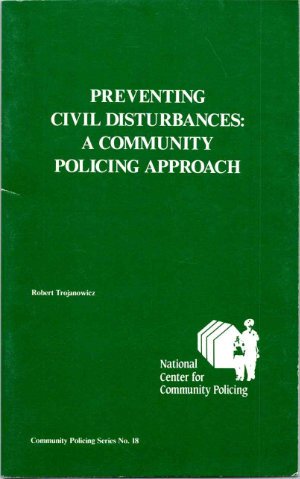By Robert Trojanowicz, Bonnie Pollard, Francine Colgan and Hazel Harden
Community Policing Programs: A Twenty-Year View offers a comprehensive examination of the evolution and impact of community policing initiatives over the past two decades. Authored by leading experts in law enforcement and community engagement, this book delves into the importance of building trust, fostering collaboration, and implementing innovative strategies to enhance public safety. Through extensive research and case studies, the book highlights the challenges, successes, and lessons learned from community policing programs across diverse communities. A must-read for policymakers, law enforcement professionals, and community advocates looking to create safer and more inclusive neighborhoods.
National Neighborhood Foot Patrol Center School of Criminal Justice Michigan State University. 1986. 68p.











